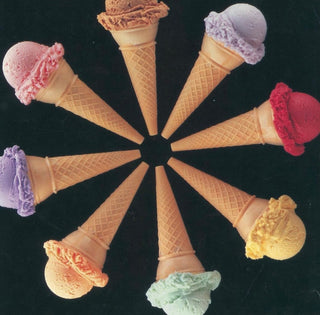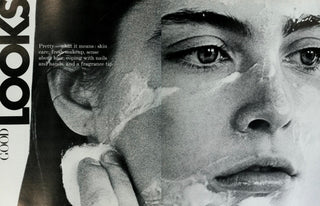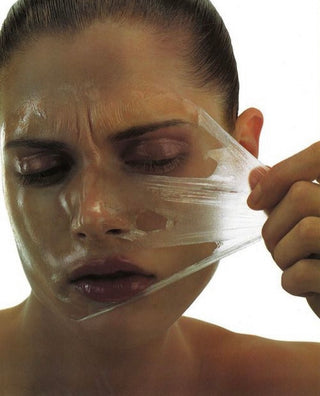
By: @dermahealthnutrition
Rosacea is a chronic, inflammatory skin disease affecting nearly 15 million Americans, mainly between the ages of 30 and 50. Rosacea is typically localized on the nose, cheeks, chin, and forehead, usually sparing the area around the mouth. It usually evolves over decades and the clinical features typically include red, dilated blood vessels in the central area of the face called telangiectasias, flushing, and inflammatory episodes with pustules and papules. In severe cases, Rosacea may result in a swelling of the nose, ears, or chin. These special forms called phymas are almost exclusively seen in males.
Multiple factors are involved in the occurrence of Rosacea, including alterations in skin barrier function, genetics, increased inflammation, aberrations of vascular reactivity and a disturbed skin microbiome with an overpopulation of Demodex mites. Rosacea skin easily responds to temperature changes, aggressive face washing and psychological stress. One of the most critical inducers of Rosacea is UV exposure, especially UV-B which triggers flares.
According to recent findings, Rosacea is often associated with gut and eye symptoms. For example, a study including nearly 50,000 Rosacea patients and 4 million healthy controls demonstrated a higher presence of celiac disease, Crohn's disease, ulcerative colitis, bacterial overgrowth within the gut and irritable bowel syndrome in Rosacea patients.
Despite ongoing research efforts, findings on the impact of nutrition on Rosacea is still limited, especially compared to acne. Generally, a varied, plant-focused diet is regarded as health promoting. According to recent studies, coffee does not appear to be associated with an increased incidence of Rosacea. Spicy and hot foods may contribute to clinical exacerbation, with increased redness of the skin and inflammatory eruptions through the activation of cellular channels, which leads to dilation of blood vessels. According to an epidemiological study with more than 82,000 Rosacea patients, alcohol appears to be a dose-dependent predictor for an increased prevalence. Lately, alcohol-induced changes of the gut microbiome have been proposed as a possible causal connection.
The first step of every Rosacea treatment should be based around the prevention of individual triggers: adequate sunscreen, avoiding excessive heat and cold, improving skin barrier function with hydrating emollients, avoiding skin irritants, a balanced diet and reducing emotional stressors. Prior to pharmacological therapy, a physician should always address these preventive steps to mitigate Rosacea flares. If necessary, pharmacologic interventions range from topical to systemic medications and laser treatments with the ideal treatment choice dependent on individual symptoms and severity.
Contrary to common believe, Rosacea:
- Does not only affect the face but also the neck, décolleté and scalp
- Is not only a skin disease but may affect the eyes and the gut
-Is easily differentiated by acne through the absence of sebum-occluded follicles called comedones
- Is common, however often underdiagnosed
- Has many special forms including lupoid Rosacea, Rosacea fulminans, gram-negative Rosacea, and Morbihan’s disease
- Should not be treated with corticosteroids
References:
Van Zuuren, E.J. Rosacea. N Engl J Med 377, 1754-1764 (2017).
Schaller, M., et al. Recommendations for rosacea diagnosis, classification and management: update from the global ROSacea COnsensus 2019 panel. Br J Dermatol 182, 1269-1276 (2020).
Clanner-Engelshofen, B.M., et al. S2k guideline: Rosacea. J Dtsch Dermatol Ges 20, 1147-1165 (2022).
Daou, H., Paradiso, M., Hennessy, K. & Seminario-Vidal, L. Rosacea and the Microbiome: A Systematic Review. Dermatol Ther (Heidelb) 11, 1-12 (2021).
Marson, J.W. & Baldwin, H.E. Rosacea: a wholistic review and update from pathogenesis to diagnosis and therapy. Int J Dermatol59, e175-e182 (2020).
Haber, R. & El Gemayel, M. Comorbidities in rosacea: A systematic review and update. J Am Acad Dermatol 78, 786-792 e788 (2018).
Drago, F., et al. The role of small intestinal bacterial overgrowth in rosacea: A 3-year follow-up. J Am Acad Dermatol 75, e113-e115 (2016).
Yuan, X., et al. Relationship between rosacea and dietary factors: A multicenter retrospective case-control survey. J Dermatol 46, 219-225 (2019).
Li, S., et al. Association of Caffeine Intake and Caffeinated Coffee Consumption With Risk of Incident Rosacea in Women. JAMA Dermatol 154, 1394-1400 (2018).
Drago, F., Ciccarese, G., Herzum, A., Rebora, A. & Parodi, A. Rosacea and alcohol intake. J Am Acad Dermatol 78, e25 (2018).
Sharma, A., et al. Rosacea management: A comprehensive review. J Cosmet Dermatol 21, 1895-1904 (2022).















